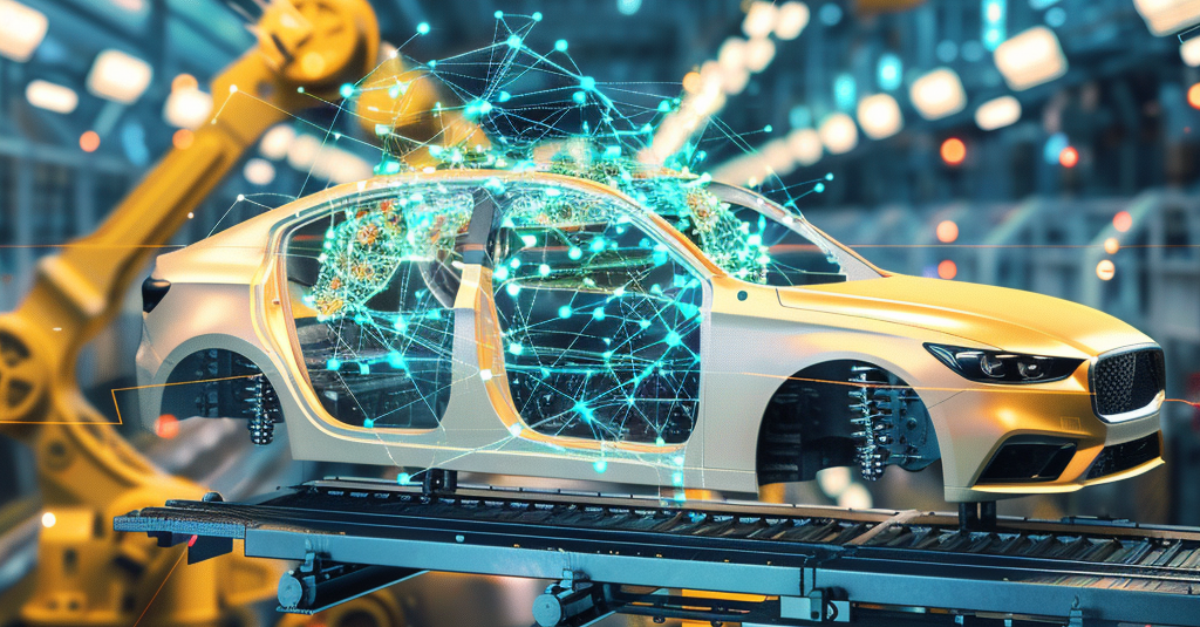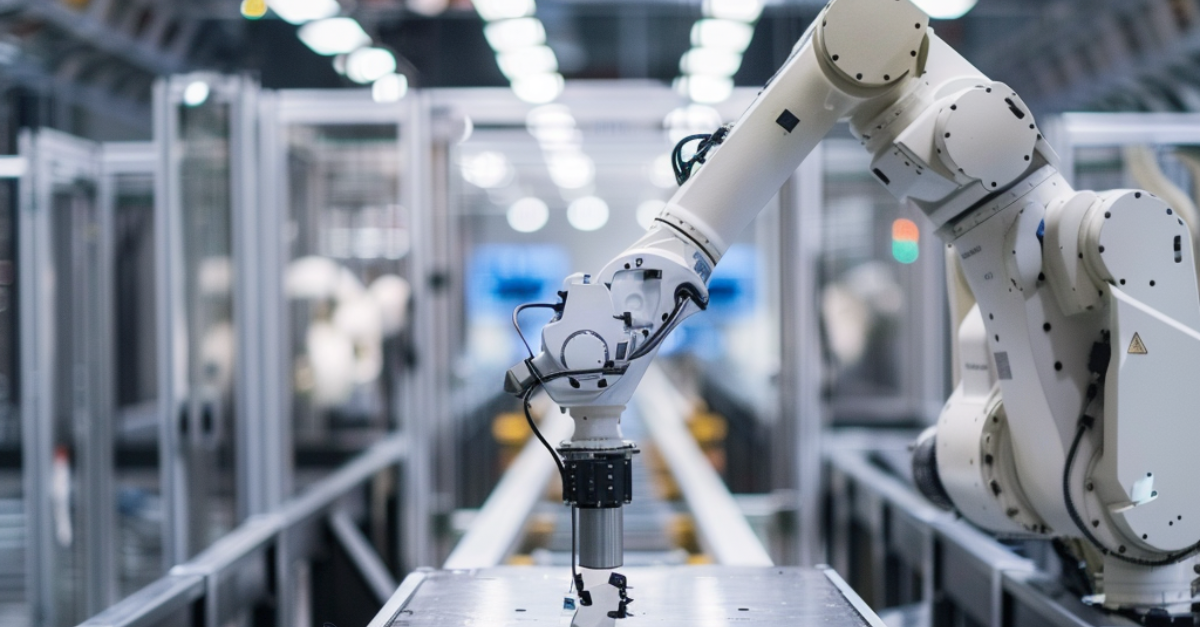Automotive Industry: How AI and MI enhanced the supply chain management?
“AI can do repetitive work very well. It’s automated, it’s accurate and fast, and it works nonstop.”
~Professor Yossi Sheffi, the founding director of Supply Chain Management at MIT
Imagine locating your house with a map and a compass, tracking deliveries through guesses of dawn and dusk, and putting all manual effort into calculating, traveling, and all other means for survival. This might leave today’s generation (you) pondering but that was the reality of Supply chain management just a few decades ago. The constant struggle to pace up in the evolving market brought critical situations and delays~ that was the time when all the supporting hands were human.
Fast Forward to today how every industry is in the run to adapt the technology for leading the market. With no delays, logistics were passed over the usage of (AI) Artificial Intelligence into the supply chain industry. The automotive industry boasts a rich history brimming with innovation and has been ever-evolving. Its journey began with the invention of the gasoline-powered car in the late 1800s. This revolutionary invention forever changed how we travel, igniting a spark that propels the industry forward.
But the story behind getting a car from the blueprint to the showroom floor is equally fascinating.
Let's delve into the evolution of automotive supply chain management, the intricate network that ensures a steady flow of raw materials, parts, and finished vehicles.
Glimpse of the Past: Transformation of Automotive Industry
The automotive industry has a long history of embracing technology to streamline processes and improve efficiency.The era of planned maps and compasses where stock inawarding was the guessing game! The supply chain in this era was relatively simple. Parts were often sourced from local blacksmiths, machinists, and carriage makers. Communication was direct, and production schedules were flexible. However, this approach limited production volume and kept stocks prices high, making them a luxury for the wealthy. This affected the market globally.
The shift came in the early 1900s through the introduction of the assembly line by Henry Ford. This shift demanded a more diverse supply chain management as it is crucial for ensuring the seamless flow of raw materials, improving inventory and transportation logistics. This explosion was a call for the advancement to remain vast in the competitive marketplace ensuring a promising future of great success and growth.
The Adoption: Digital Transformation Technologies (2000s Onwards)
The tide began to shift with the explosion of big data in the mid-2000s. The increasing availability of vast datasets and advancements in technology paved the way for more sophisticated AI applications. In this period, the automotive industry began to explore digital transformation for improving stock and time management, enhanced efficiency and collaboration with stakeholders with continued transparency and value. Recognizing this potential, the automotive industry began to embrace digital transformation. This wasn't just about managing stock and time better; it was about leveraging AI to optimize these processes. The goal? Enhanced efficiency, seamless collaboration with stakeholders, and unwavering transparency throughout the supply chain, ultimately leading to increased value for all involved.
AI's Dominating Presence in the Automotive Industry: Proven Data
With its complex global supply chains and relentless pressure for efficiency, the automotive industry has been a hotbed for AI adoption. The shift from traditional forecasting methods to AI integration has introduced technologies like IoT and blockchain, tackling specific tasks like route optimization and rudimentary demand forecasting. The impact of AI has gone far beyond with incredible decisions. There is proven data that ideally showcases the power of technology in the Industries.
Reportedly, A 2023 McKinsey report estimates that AI can generate up to $4 trillion in value across various supply chain functions globally. It would benefit the automotive manufacturers in real time. The other example of a 2022 research by a Russian university showed that AI-driven inventory optimization led to a 20% reduction in storage costs for an automotive manufacturer.
The outdated supply chain management practices brought disruptions around every corner – a delayed shipment, a sudden parts shortage, and a quality control issue that threw production into a slow race. These nightmares ended with a beautiful story that brewed~ Digital Transformation powered by AI and Machine Learning. The Game Changer!
What’s the Result?
Real-time traffic data Weather Insights Fuel efficiency calculations
Optimized routes Minimized delays Significant cost savings.
As the Automotive industry runs smoothly on a finely tuned supply Chain but even minor disruptions can have cascading effects on supply chain management practices. Hence, the amazing duo of AI and Machine Learning has taken a deep drive that has helped the automotive industry in several ways:
Optimized Transportation Routes:
Real-time traffic data, weather conditions, and fuel efficiency are analyzed to create the most efficient routes for transporting parts and vehicles. This translates to:
- Reduced Delivery Costs
- Lower Emissions
- Faster Delivery Times
Predictive and Preventative Measures:
ML algorithms analyze historical data to identify potential progress and disruptions, allowing for proactive measures to mitigate delays.
Enhanced Visibility and Collaboration:
Real-time tracking of parts and vehicles throughout the supply chain provides greater transparency and facilitates smoother supplier collaboration.
Inventory Management:
AI, combined with ML algorithms, analyzes past sales data, production schedules, and even weather patterns to predict future demand. This empowers you to implement :
- Just-in-Time (JIT) Inventory Management: This minimizes storage costs and the risk of obsolescence by receiving parts precisely when needed.
- Reduced Lead Times: Accurate forecasting allows for proactive ordering, ensuring parts arrive exactly when required for production.
- Improved Cash Flow: By keeping inventory lean, you have more capital for other business initiatives.
Digital transformation: Their impact on the Supply Chain:
The automotive industry has a long history of embracing technology to streamline processes and improve efficiency. What are the key tools that have benefited the automotive industry?
Demand Forecasting and Production Planning:
- Computer-Aided Design (CAD) & Manufacturing (CAM): These tools allow for precise digital models of vehicles and production processes, enabling virtual simulations to identify and address potential issues before physical prototypes are built. This streamlines production planning and reduces waste.
- Enterprise Resource Planning (ERP) Systems: ERP software integrates various business functions like manufacturing, inventory, and finance, providing a unified platform for real-time data on production schedules, material needs, and sales forecasts.
- Advanced Analytics & Big Data: By analyzing historical sales data, market trends, and even social media sentiment, businesses can make more accurate demand forecasts and optimize production planning to meet fluctuating demands.
Inventory Management and Logistics:
- Barcodes & Radio Frequency Identification (RFID): These technologies allow for automated tracking of parts and vehicles throughout the supply chain, providing real-time data on location and inventory levels. This reduces the risk of stockouts and overstocking, improves efficiency, and optimizes transportation routes.
- Warehouse Management Systems (WMS): WMS software helps manage warehouse operations, including inventory control, picking and packing, and shipping. This ensures efficient utilization of warehouse space and minimizes fulfillment errors.
- Transportation Management Systems (TMS): TMS software optimizes transportation routes, schedules, and carrier selection based on factors like cost, fuel efficiency, and delivery times. This minimizes delivery delays and reduces transportation costs.
In Conclusion, The automotive industry is a prime example of how technology integration and digital transformation can revolutionize an entire sector. By embracing these advancements, manufacturers are well-positioned to navigate the ever-evolving landscape and secure a competitive edge in the global marketplace.These are just a few examples of how AI is revolutionizing the automotive industry. With its ability to analyze vast amounts of data, make real-time predictions, and automate complex tasks, AI is poised to become the invisible engine driving efficiency and profitability for the automotive industry. As AI continues to evolve and integrate seamlessly within existing systems, the potential for further disruption and innovation is limitless.
Recent Posts







Add Comment
0 Comments